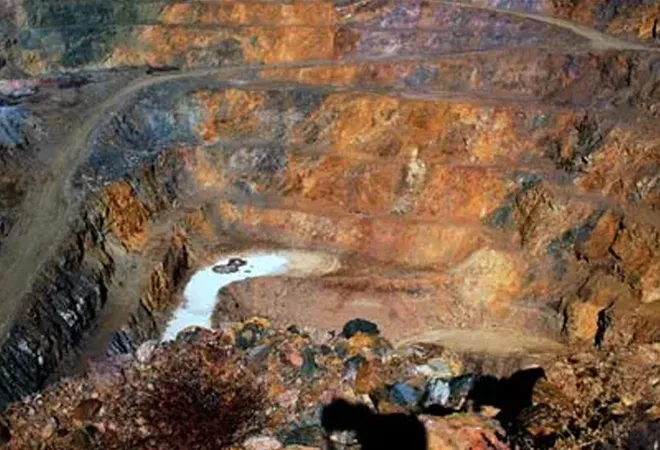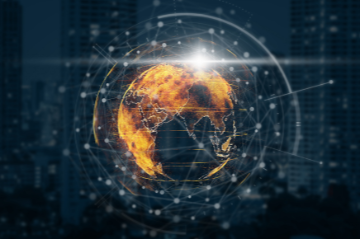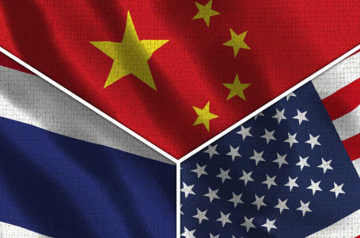
Indian Prime Minister Narendra Modi’s recent visit to the United States (US) has proved to be a landmark in the little-known domain of rare earth elements (REEs). India is all set to join the
Minerals Security Partnership (MSP), a multi-nation US-led partnership to create critical energy and mineral supply chains. This is an ambitious new
initiative begun by the US in June 2022 to bolster critical mineral supply chains. Its defined goals are that critical minerals should be
“produced, processed, and recycled in a manner that supports the ability of countries to realize the full economic development benefit of their geological endowments.”. By participating in the MSP, India will join a select grouping of 12 other partner countries plus the European Union (EU).
This article examines the importance of REEs as part of the electronics and semiconductor ecosystem of the future. It further outlines that this sector, from its exploration to mining, processing and production, needs to be categorised as a strategic sector.
Understanding REEs and China’s dominance
Technology is an intrinsic function of research, resources, skills, and scales of production. As high-end technologies take shape, leading to disruptions, the REE, an
elusive set of 17 metallic elements will be the fulcrum of change. These include 15lanthanides on the periodic table plus scandium and yttrium. REEs are an essential part of many high-tech devices and are basic components in high-technology products, across a wide range of applications including mobile phones, computer hard drives, electric and hybrid vehicles, screen monitors, electronic displays, guidance systems, lasers, radar and sonar systems, etc. They form an integral part of the chip ecosystem as well. Inevitably, their rising prices and easy availability also impact each subsequent step in the semiconductor supply chain.
As high-end technologies take shape, leading to disruptions, the REE, an elusive set of 17 metallic elements will be the fulcrum of change.
Deng Xiaoping quoted in 1987, “The Middle East has its oil, China has Rare Earths”. In 2008, China accounted for
more than 90 percent of the world production of REEs and by 2011, China accounted for nearly 97 percent. Semiconductor manufacturing also depends acutely on these rare earth metals worldwide. These materials play an integral role in the manufacturing of most electronic devices. China has nearly monopolised the production of these metals. However, because of US-China trade disputes, the prices for these metals have risen.
Open data suggests that China consumes 104,000 metric tonnes of rare earths which is nearly 67 percent of the worldwide consumption. With this scale of production capacity and consumption capacity, manipulation of global prices as well as export is a possibility. Demand supply metrics with an almost stable supply from China over the years have made most manufacturing entities gloss over this silent hegemony of one nation. This could also herald another front for trade wars in a much more complex scenario in a post-pandemic world with stretched Global Value Chains (GVC).
Where does India stand?
India at 6 percent of total known rare earth deposits is supposedly the fifth largest reservoir of REE. To this effect, Indian Rare Earths Limited (IREL) was established way back in 1950. Toyota Tsusho in a
Joint Venture (JV) with IREL also forayed into this domain as early as 2010-11. There have been policy hurdles in the past and this critical sector requires expertise, large capital outlays and high technology for extraction, processing, and logistics. Carefully crafted policies which look at the environment, as well as the scale of production, are therefore imperative. There is a lack of demand, lack of entrepreneurship, low investment in technology, and no private-sector footprint.
Demand supply metrics with an almost stable supply from China over the years have made most manufacturing entities gloss over this silent hegemony of one nation.
Exploration in India has largely been in the ambit of the government and has been conducted by the Bureau of Mines and the Department of Atomic Energy. Mining and processing have been centralised under the aegis of IREL. As a policy, the Ministry of Mines has amended Mines and Minerals Development and Regulation Amendment Act 2021 for giving a boost to mineral production but more needs to be done.
The way forward
Technology is a costly commodity and it requires years to develop it to a competitive threshold. India needs to capitalise on its upcoming entry into the MSP. To this end, a large number of technological collaborations with mutual benefits need to be ascertained and configured. The academia and central R&D organisations need to develop a course curriculum for the training of experts and qualified engineers in extraction and processing techniques.
A nodal organisation like the Indian School of Mines at Dhanbad or other nominated academic centres of excellence could be nominated to establish an RRE centre of excellence and work in conjunction with various public and private sector entities to develop environmentally-friendly technologies of the future. Public sector investment will be the fulcrum of effort in this domain as foreign investment has intrinsic issues which can be deliberated upon. A new entity, the Department of Rare Earths, with experts in the field, could also be considered by the government to make policies and to carry out the requisite actions with regard to the strategic orientation of this sector.
Public sector investment will be the fulcrum of effort in this domain as foreign investment has intrinsic issues which can be deliberated upon.
There is a need to acknowledge this space as a ‘strategic sector’ with policy interventions to make this sector lucrative and competitive for entrepreneurs with adequate incentivisation. This will be the key to future high-technology dreams including chip manufacturing and critical electronics for varied applications. There are some open-source governmental memos and reports which indicate large deposits of REE in some countries. There could be a case in point for the exploration of these critical minerals jointly in other countries with due diligence and thought. While this will require a large effort—diplomatically and technologically, the fruition of such projects could be geopolitical game changers in the region.
Natural resources possess an intrinsic capability to assume a role of bargaining chips on a macro scale. In all likelihood, this sector, under the US-led MSP, will assume the status of something like the present Nuclear Suppliers Group (NSG) which was set up in 1974. This is an important waypoint in the overall context. The present talent alongside the introduction of astute policy interventions, infusion a public-private partnership model and curation multilateral JVs in this space could accrue rich dividends to India in the future—strategically, economically, and technologically.
The views expressed above belong to the author(s). ORF research and analyses now available on Telegram! Click here to access our curated content — blogs, longforms and interviews.



 Indian Prime Minister Narendra Modi’s recent visit to the United States (US) has proved to be a landmark in the little-known domain of rare earth elements (REEs). India is all set to join the
Indian Prime Minister Narendra Modi’s recent visit to the United States (US) has proved to be a landmark in the little-known domain of rare earth elements (REEs). India is all set to join the PREV
PREV


